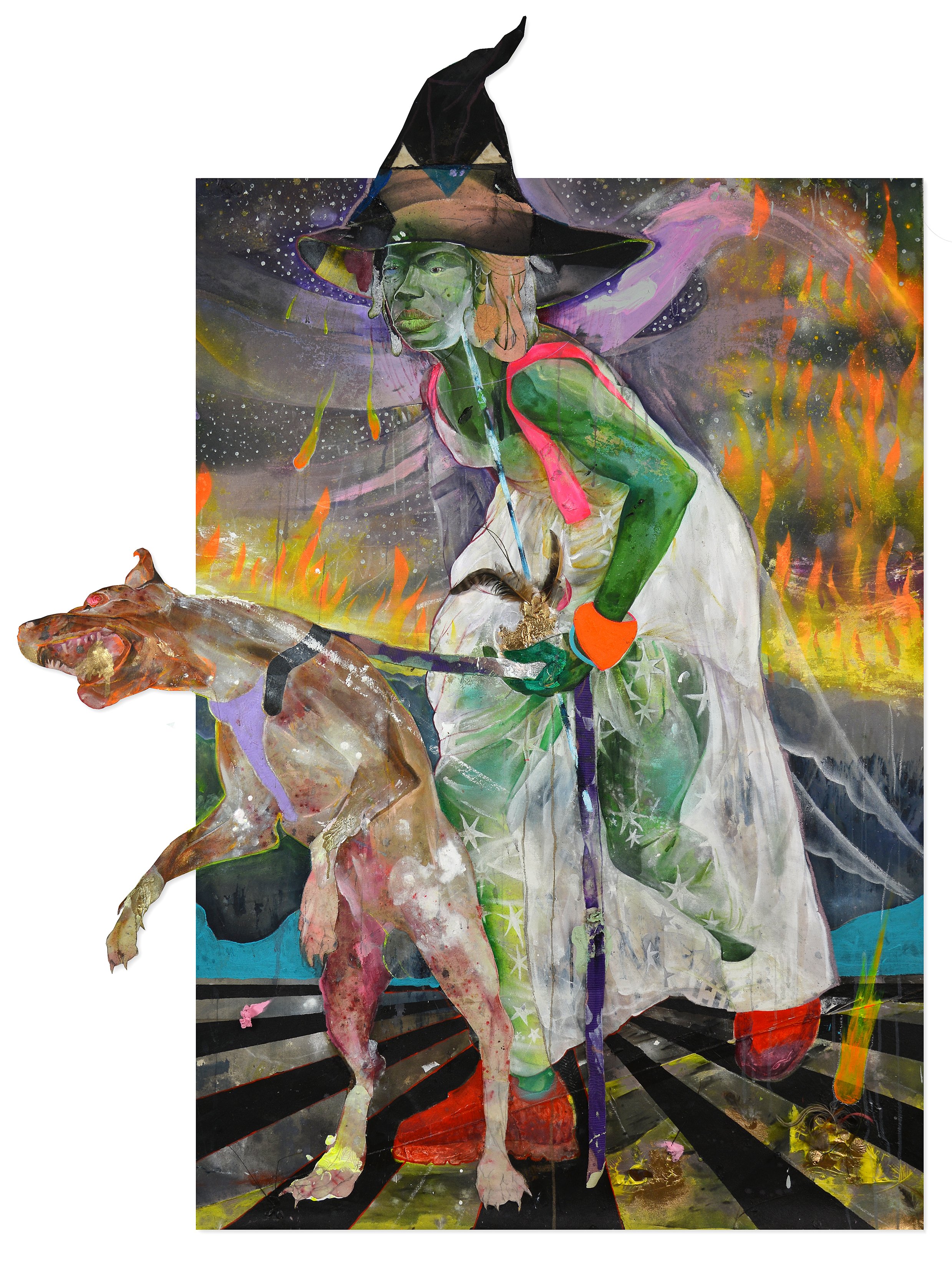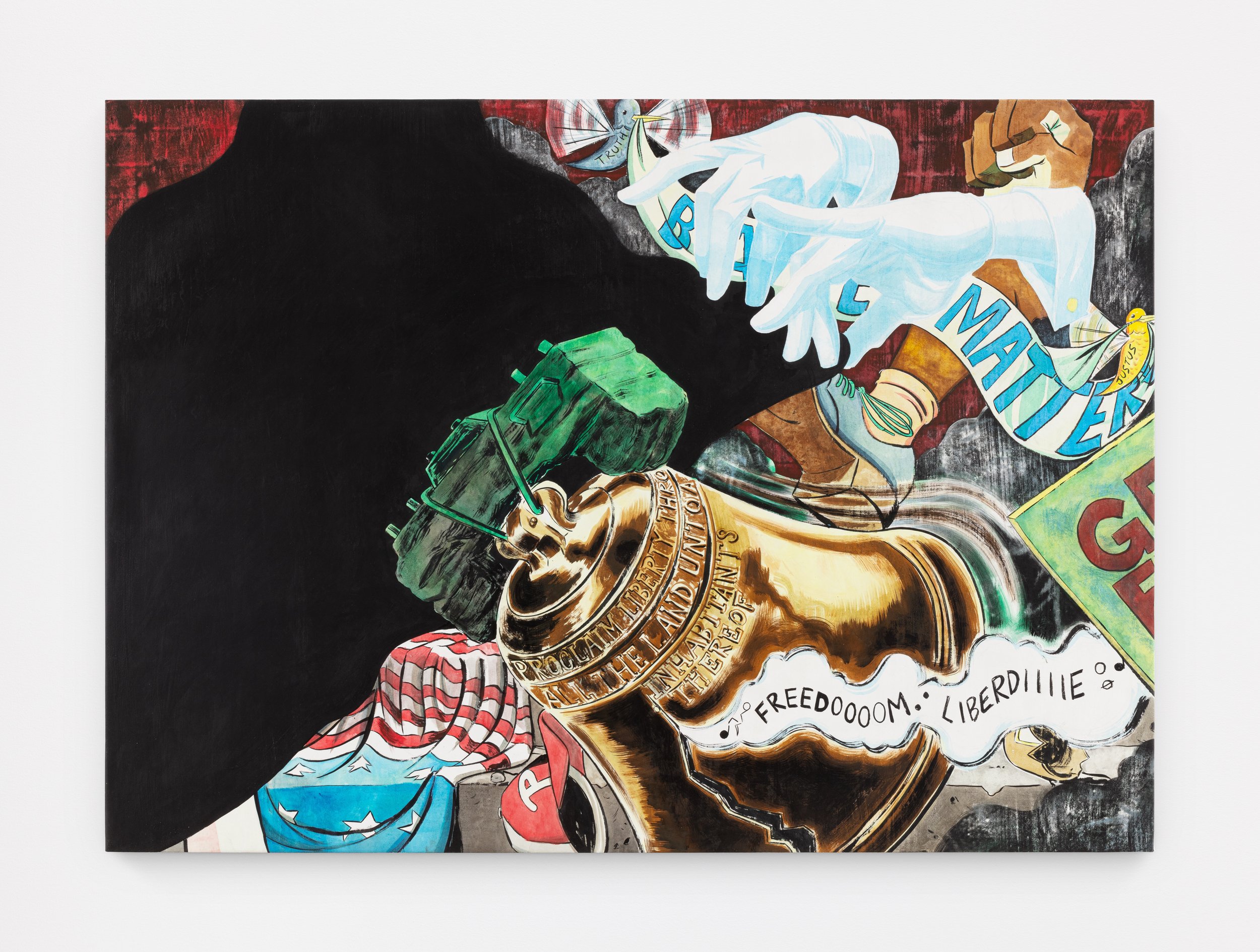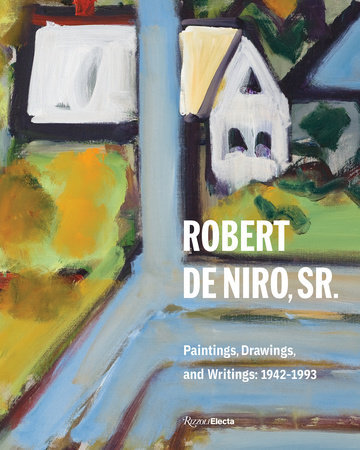(New York, NY – June 7, 2018) — The Estate of Robert De Niro, Sr. is delighted to announce that Henry Taylor is the 2018 recipient of the esteemed Robert De Niro, Sr. Prize.
Established in 2011 by Robert De Niro, in honor of his late father, the accomplished painter Robert De Niro, Sr., the prize recognizes a mid-career American artist for significant and innovative contributions to the field of painting. Nominated each year by a distinguished selection committee, Henry Taylor is the seventh recipient of the $25,000 merit-based prize, administer by the Tribeca Film Institute (TFI) for which Robert De Niro is a co-founder. This marks the first time that Henry Taylor has been awarded a solo monetary prize for his achievements in painting.
Since the inaugural prize was awarded to Stanley Whitney in 2011, the list of recipients has grown to including acclaimed painters Joyce Pensato (2012), Catherine Murphy (2013), Robert Bordo (2014), Laura Owens (2015), and R.H. Quaytman (2016). The Robert De Niro, Sr. Prize is among the first of its kind to celebrate and shine a light on influential mid-career artists.
This year’s selection committee included Sarah Douglas, Editor-In-Chief of ARTnews; Courtney Martin, Deputy Director and Chief Curator of Dia Art Foundation; and Susan Thompson, Associate Curator at the Solomon R. Guggenheim Museum.
Of Taylor’s work Courtney Martin remarked, “In what feels like a condensed number of years, Henry Taylor has delivered a body of engaging narrative, figural painting. Though the stories attached to the works are often deeply personal, the canvas reveals layers of meanings both universal and formal. He is masterful with color and with compositional arrangements that prick the senses. Taylor’s paintings are a full-on experience.”
“Henry Taylor had the unusual experience of 'emerging' in mid-career, becoming known widely as an artist at age 50 or so,” said Sarah Douglas. “Having followed his career closely over the past ten years, and made visits to his studio (whether the permanent one in Los Angeles or the impromptu one at P.S.1), I've witnessed, and never fail to be impressed by, his dedication to painting."
“Whether his subjects are friends and neighbors, local homeless or mentally ill individuals, or prominent cultural figures, each of Taylor’s portraits captures the fullness of a life in a single moment, evoking a distinct sense of mood and creating a profound connection with the viewer,” said Susan Thompson.
“I very much admire Henry Taylor's lifelong dedication to his work and his continued devotion to painting through his teaching.” said Robert De Niro “I am proud to recognize Taylor’s career through this prize that honors my father’s memory, and I am grateful to the selection committee for their choice of Henry Taylor this year.”
"Good things come to those who wait," said Henry Taylor.
About Henry Taylor
Henry Taylor was born in Ventura, CA (1958) and received a BFA from the California Institute of the Arts. Recent solo exhibitions include the floaters, High Line Art, New York, NY (2017); This Side, That Side, The Mistake Room, Guadalajara, Mexico (2016); They shot my dad, they shot my dad!, Artpace, San Antonio, TX (2015); and a retrospective at MoMA PS1, Long Island City, NY (2012). His work has been featured in group exhibitions in museums worldwide including the Whitney Biennial, Whitney Museum of American Art, New York, NY (2017); Why Art Matters!, Torrance Art Museum, Torrance, CA (2017); Stedelijk Museum voor Actuele Kunst, Ghent, Belgium (2016); Astrup Fearnley Museet, Oslo, Norway (2016); Whitney Museum of American Art, New York NY (2016); Hammer Museum at Art + Practice, Los Angeles, CA (2016); Camden Arts Centre, London, UK (2016); Studio Museum, Harlem, NY (2013); Carnegie International, Carnegie Museum of Art, Pittsburgh, PA (2013); Museum of Contemporary Art, Los Angeles, CA (2012); Los Angeles County Museum of Art, Los Angeles, CA (2011); and the Rubell Family Collection, Miami, FL (2011).
About Robert De Niro, Sr.
Robert De Niro, Sr. (1922-1993) was part of the celebrated New York School of Post-War American artists. His work blended abstract and expressionist styles of painting with traditional representational subject matter, bridging the divide between European Modernism and Abstract Expressionism. He studied at the renowned Black Mountain College with Josef Albers, and later, with Hans Hofmann in Provincetown and New York, before going on to exhibit at Peggy Guggenheim’s renowned Art of this Century gallery in 1945 and 1946, as well as at galleries throughout the U.S. during his career. In 2010, a retrospective exhibition of his work was presented at the Musee Matisse in Nice, France.
De Niro, Sr.’s work is included in the permanent collections of the Brooklyn Museum of Art; Hirshhorn Museum and Sculpture Garden; The Metropolitan Museum of Art; Smithsonian American Art Museum; Parrish Art Museum, and Whitney Museum of American Art, among others. His work is represented by DC Moore Gallery.
For more information on the Estate of Robert De Niro, Sr. please visit www.robertdenirosr.com.
About the Jurors
Sarah Douglas currently serves as the Editor-in-Chief of Artnews and has been an art journalist and editor since 1999. From April 2011 to July 2014, she served as Culture Editor at The New York Observer. Prior to The New York Observer, Douglas was a staff writer at Art+Auction, Modern Painters and Artinfo.com, which she helped to launch in spring 2005 as a key member of the site’s original editorial team. For four years she ran the U.S. editorial office of the London-based The Art Newspaper, and has contributed to T: The New York Times Style Magazine, New York magazine online, The Economist’s quarterly Intelligent Life and The National, among others. In 2013 Douglas was the recipient of ArtTable’s New Leadership award.
Courtney J. Martin is the Deputy Director and Chief Curator at the Dia Art Foundation, prior to which she held distinguished positions at institutions including Brown University, Vanderbilt University and the University of California, Berkeley. She received a doctorate from Yale University for her research on twentieth century British art and is the author of essays on Rasheed Araeen, Kader Attia, Rina Banerjee, Frank Bowling, Lara Favaretto, Leslie Hewitt, Lubaina Himid, Asger Jorn, Wangechi Mutu, Ed Ruscha, Jack Whitten and Yinka Shonibare. In 2018 she will oversee exhibitions of art work by Mary Corse, Dan Flavin, Nancy Holt, Blinky Palermo, Dorothea Rockburne and Keith Sonnier at the Dia Art Foundation.
Susan Thompson is Associate Curator at the Solomon R. Guggenheim Museum. Since joining the curatorial staff in 2009, she has contributed to several exhibitions and catalogues, including Rineke Dijkstra: A Retrospective (2012), Carrie Mae Weems: Three Decades of Photography and Video (2014), Doris Salcedo (2015), Photo-Poetics: An Anthology (2015–16), and Danh Vo: Take My Breath Away (2018). Thompson cocurated Paul Chan, Nonprojections for New Lovers (2015) and Anicka Yi, Life Is Cheap (2017). Thompson is one of the organizing curators for the museum’s Young Collectors Council, which acquires the work of emerging artists for the museum’s permanent collection.
About Tribeca Film Institute
Tribeca Film Institute champions storytellers to be catalysts for change in their communities and around the world. Each year, we identify a diverse group of exceptional filmmakers and media artists then empower them with funding and resources to fully realize their stories and connect with audiences. Our education programs empower students through hands-on training and exposure to socially relevant films, offering young people the media skills necessary to be creative and productive global citizens. We are a year-round nonprofit arts organization founded by Robert De Niro, Jane Rosenthal and Craig Hatkoff in the wake of September 11, 2001.
For more information about Tribeca Film Institute, please visit http://www.tfiny.org
For more information on the Robert De Niro, Sr. Prize, please contact Shawna Gallancy, Sutton, at Shawna@suttonpr.com or +1 212 202 3402.
































